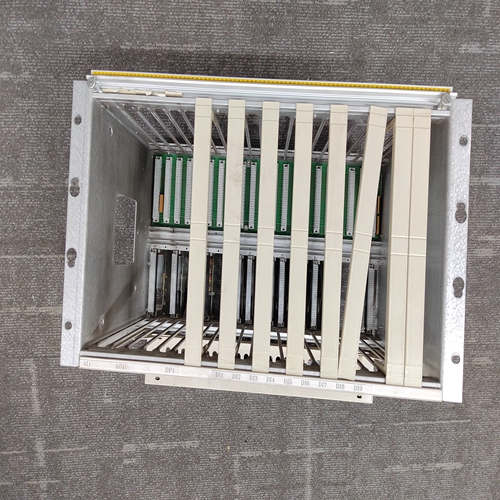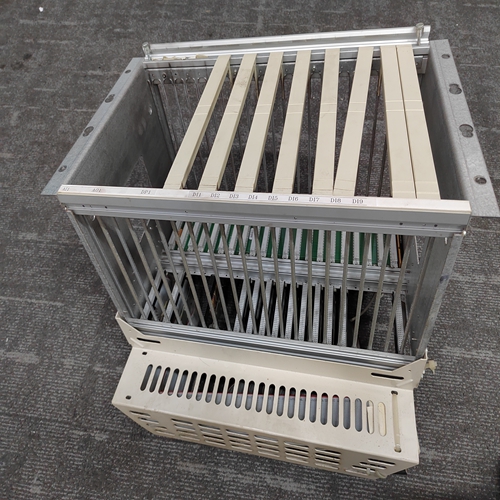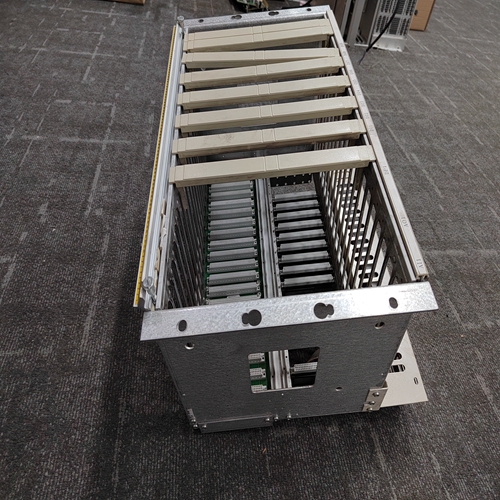
DSRF197模拟量通信框架
而前几页所述的程序联系人类型可根据需要使用为了捕获系统中所选点、模块或元件的故障或报警状态,PLC的故障表是所有类型故障发生时自动生成的日志。
这种故障信息的组合提供了系统操作的更广泛视图并且有助于指示多个故障和警报之间的因果关系。
I/O故障表中的故障数
I/O故障表最多可包含32个故障。其他错误会导致表溢出,并丢失错误。系统参考IO_FULL(%S00010)设置为表明:故障表已满。
发生故障时,前16个将记录到表中,并保持在表中,直到再次清除;如果表溢出,这16个错误都不会被删除。过失17通过32,故障表作为先进先出堆栈运行。当故障33发生时,
故障17从表中删除。清除故障表将删除所有故障列表。
清除故障
必须从I/O故障表中清除故障,以便在PLC CPU和待清除的相关故障触点。
可以从编程器屏幕或通过清除故障表中的故障应用程序。
清除故障表将删除其中包含的故障;它不清除中的故障条件系统。如果导致故障的条件仍然存在并被检测到,则故障将通常再次报告。但是,如果故障被配置为致命故障
(停止PLC的一个),清除后将不再报告故障。这允许PLC进入运行模式。
总线错误率高导致的设备故障损失
如果总线出现高错误率(可能是由于电气干扰或损坏的电缆)、设备故障丢失可能会记录到故障表中。装置损耗与I/O总线故障一起记录的故障通常可归因于总线安装质量差。应尽快纠正导致总线错误的情况。FIP总线控制器产生的故障
对于FIP总线故障,显示屏显示故障发生的日期和时间以及以下信息:I/O故障的位置始终包括FIP的机架和插槽并且可选地包括远程订户地址。
故障位置还可能包括的远程机架和插槽远程I/O设备中出现故障的I/O模块。不习惯。
已发生故障的一般类型。对于诊断故障
CPU设置故障参考。对于致命故障,CPU设置故障参考并将其自身置于停止模式。
进一步解释了故障类别:电路故障、模块故障、I/O总线故障、块丢失和IOC软件异常。提供有关电路和模块故障的附加信息。
While the types of program contacts described on the previous pages can be used as needed
to capture the fault or alarm status of selected points, modules, or elements in the system,
the PLC’s fault tables are an automatically-generated log of faults of all types as they occur.
This grouping together of fault information provides a broader view of system operations
and helps indicate causal relationships among multiple faults and alarms.
Number of Faults in the I/O Fault Table
The I/O Fault Table can contain up to 32 faults. Additional faults cause the table to overflow, and faults are lost. The system reference IO_FULL (%S00010) is set to indicate that
the fault table is full.
As faults occur, the first 16 are logged into the table and remain there until the table is
cleared again; none of these 16 faults will be dropped if the table overflows. For faults 17
through 32, the Fault Table operates as a First-In-First-Out stack. When fault 33 occurs,
fault 17 is dropped from the table. Clearing the Fault Table removes all the fault listings Clearing Faults
Faults must be cleared from the I/O Fault Table to be cleared in the PLC CPU and for the
associated fault contacts to be cleared.
Faults can be cleared from the Fault Table either from the programmer screen or by the
application program.
Clearing the fault table removes the faults it contains; it does not clear fault conditions in
the system. If the condition that caused a fault still exists and is detected, the fault will
normally be reported again. However, if the fault has been configured as a Fatal fault
(one that stops the PLC), the fault will not be reported again after clearing. This allows
the PLC to go to Run mode.
Loss of Device Faults Caused by High Bus Error Rate
If the bus is experiencing a high error rate (possibly due to electrical interference or
damaged cable), Loss of Device faults may be logged into the Fault Table. Loss of Device
faults that are logged in conjunction with I/O Bus Faults can usually be attributed to the
poor quality of the bus installation. The condition causing the bus errors should be corrected as soon as possible.Faults Generated by the FIP Bus Controller
For a FIP bus fault, the display shows the date and time the fault occurred, and the following information:
The location of an I/O fault always includes the rack and slot of the FIP
Bus Controller and optionally includes the remote subscriber address.
The fault location may also include the remote rack and slot of the
faulted I/O module within a remote I/O device.
Not used.
Not used.
The general type of fault that has occurred. For diagnostic faults, the
CPU sets fault references. For fatal faults, the CPU sets fault references
and places itself in STOP mode.
Further explains fault categories: Circuit Fault, Module Fault, I/O Bus
Fault, Loss of Block, and IOC Software Exception.
Provides additional information about Circuit and Module Faults.










